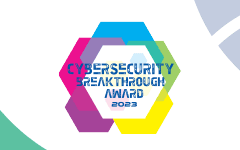As business leaders and IT professionals move into 2024, Omada has identified specific drivers that should inform what organizations must consider when managing identity governance for the rest of this year and beyond. In this post, we will discuss three key takeaways from The State of Identity Governance 2024 report that should inform what security and compliance managers consider to thwart identity-related security attacks being waged by a new generation of attackers.
1. The number of identity-related security risks is increasing
Organizations must adopt more robust measures beyond traditional security practices
Identity-related incidents rose sharply in 2023, and experts estimate that in as many as eight in ten cybersecurity attacks, hackers gained access to their targets using stolen and compromised credentials. We expect this number to continue to rise, in sophistication and volume. The State of Identity Governance 2024 reported that most organizations have more employees and known third parties like partners, consultants, contractors, and temporary help working remotely than before COVID. This increase in the number of remote users makes incidences of poor physical security practices more likely. Beyond that, there are many other ways for hackers to compromise accounts and gain unauthorized access, such as orchestrated social engineering attacks. IT professionals see these trends more clearly than most employees, so they must ensure they are taking proactive steps to address the associated threats for the rest of the year 2024.
Business leaders and IT professionals using modern Identity Governance and Administration (IGA) reported extreme confidence in their security hygiene practices; 95 percent agree their organization uses strong identity verification, 93 percent say they can quickly identify anomalous behavior and shut down suspect accounts, 94 percent say they can easily meet new business requirements, and 91 percent say they can easily produce regulation-specific reports.
Good security hygiene is fundamental, but it is not enough. Omada is seeing more organizations pivot to an identity-first security mindset to neutralize the more dire threats to come. Security frameworks like Zero Trust all begin with a strong identity foundation and implement least privilege. As 2024 unfolds, in addition to executing traditional cybersecurity practices like password security, user cyber hygiene education, protecting privileged users, and Pen Testing, organizations must intensify their focus on identity management that provides users just the level of access that is required and then enforces this control on an ongoing basis.
2. Cracking down on excessive permissions and unnecessary access will become a bigger priority
The State of Identity Governance 2024 revealed that more than seven in ten IT security and business leaders believe that people in their organizations have unnecessary access or excessive access to assets. Gaining access to legitimate credentials through nefarious means continues to be one of the primary factors used in successful cyberattacks. Getting a handle on this must be a top priority over the remainder of 2024, especially as many organizations face new and strengthened requirements and regulations around cybersecurity and breach reporting. The best way to get permissions and entitlements under control is through an IGA program that manages joiner, mover, and leaver workflows.
Organizations that have implemented an IGA program to manage joiner, mover, and leaver scenarios, as well as provisioning and access certification, face a unique challenge though: despite regular certifications, users may still have excessive access privileges. To overcome this challenge, IT and business units must collaborate to accurately evaluate resources based on their sensitivity and conduct thorough assessments to determine whether users truly require the access they have been granted.
Even when organizations take steps to improve the identity lifecycle management process by optimizing access requests, de-provisioning, and changing roles and policies, they must respond to identity compromise in real time to prevent breaches. Many organizations are well into their digital transformation to the cloud and moving to SaaS applications; others are chest-deep in planning their migrations. The ability to respond to critical incidents and shut down all access by an identity quickly cannot be overemphasized in cloud environments. Excessive permissions in cloud-hosted environments make these identities far riskier. Organizations will need to not just leverage identity governance with well-defined identity lifecycle management but also do so with a workflow that can operate close to or near real-time.
3. Speed, adaptability, connectivity, and generative AI will emerge as top requirements for organizations choosing identity governance strategy solutions
In The State of Identity Governance 2024 more than six in ten IT security and business leaders surveyed said their organizations favor adaptability in their IGA solution. This marks a wholesale change in tactics by Identity Governance teams. Historically, many legacy or in-house-built IGA solution users focused their development efforts on building connectivity and workflows that adapt their existing processes to work with the tools and applications of their business. Modern IGA solutions scale and adapt to changing business requirements with little or no additional development.
Adaptability is especially relevant to individual IAM solutions that offer best-in-breed functionality. Organizations must look for IGA solutions they can configure to work seamlessly with other systems and applications to meet specific business and compliance requirements. When evaluating a new IGA, companies must also look for a connectivity framework that enables an organization to apply IGA to their assets without costly customization.
The most preferred identity governance solutions will be those that provide configurable connectivity and adaptability to work with an organization’s existing applications and infrastructures and other IAM solutions. Preferred IGA solutions will also enable interoperability with support capabilities like generative AI that help automate real-time identity and access management. A SaaS-based identity governance solution with faster data ingestion and the capacity to synch quickly to onboard applications will enable users to constantly optimize business processes.
Regardless of the vendor you choose, you will encounter applications that require integration but lack out-of-the-box connectors. This necessitates an extensible framework that enables you to swiftly configure new connectors that enhance your security and governance posture with a standards-based, no-code model.
Learn what it takes to manage IGA as you migrate to the cloud
Based on The State of Identity Governance 2024 report it is clear that every organization can take something away from it. To learn more about how you can improve your current IGA strategy so that it addresses these areas that surfaced from the report, have a look at Omada Identity Cloud, our modern IGA solution that operates as a cloud-native IGA as a service offering running Microsoft Azure Cloud.




























